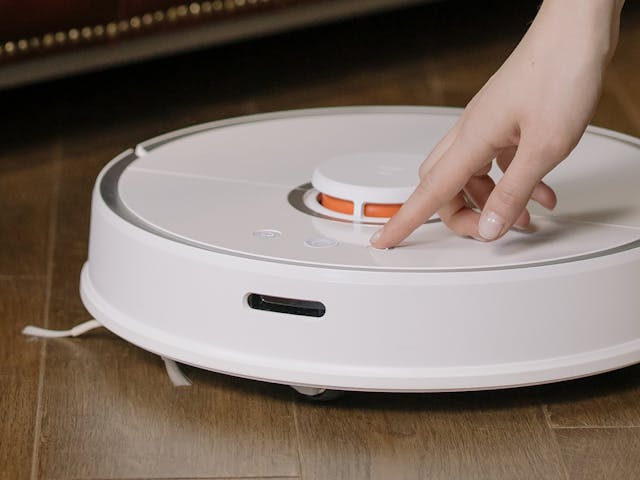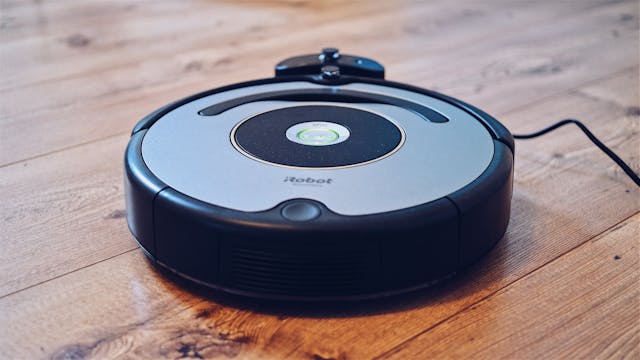
Best Robot Vacuum Price Comparison – 2025 Edition
Robot vacuum cleaners have transitioned from novelty gadgets to essential smart home devices. With better navigation systems, stronger suction, and improved battery life, they now offer a realistic solution to daily cleaning routines—especially for busy households or those with mobility concerns. But with dozens of brands and models flooding the UK market, each boasting unique features and price points, how can you know which one offers the best value? In this guide, we’ll break down key features, pros and cons, and price ranges of some of the most popular robot vacuums to help you make an informed choice.
 The first thing to consider when comparing robot vacuums is your floor type and layout. Some models are better suited for carpeted areas with deep pile, while others are optimised for hard flooring like tile or wood. Additionally, larger homes may require models with advanced mapping capabilities and extended battery life. For smaller flats or single-storey homes, a more basic unit with random navigation might suffice. In any case, understanding your needs is the foundation for choosing the right product.
The first thing to consider when comparing robot vacuums is your floor type and layout. Some models are better suited for carpeted areas with deep pile, while others are optimised for hard flooring like tile or wood. Additionally, larger homes may require models with advanced mapping capabilities and extended battery life. For smaller flats or single-storey homes, a more basic unit with random navigation might suffice. In any case, understanding your needs is the foundation for choosing the right product.
Pricing in 2025 has become more diverse than ever. Entry-level robot vacuums can start at under £150, offering simple navigation, basic suction, and a limited cleaning schedule. While these models may lack some of the bells and whistles, they can still provide a convenient daily tidy-up. For users wanting a solid budget option, platforms like www.daddyprice.co.uk are helpful in comparing popular low-cost models side by side. Their tools allow users to quickly spot differences in specs, prices, and ratings.
Mid-range options—typically between £200 and £400—strike a balance between functionality and cost. These robots often include LiDAR or vSLAM navigation, meaning they build a map of your home and clean in a logical, efficient path. Many come with smartphone app controls, voice assistant compatibility (Alexa, Google Assistant), and virtual boundaries to prevent them from entering certain rooms. Brands like Eufy, Ecovacs, and Roborock dominate this range, offering reliable cleaning performance with minimal user intervention.
At the high end of the market (above £500), robot vacuums become impressively smart and powerful. You’ll find features like multi-floor mapping, carpet boost modes, automatic dirt disposal, and even mopping functionality. Some premium models can identify objects like cables, socks, or pet waste and avoid them accordingly. iRobot’s Roomba s9+, Roborock S8 Pro Ultra, and Ecovacs Deebot X2 Omni are a few examples of machines that offer both vacuuming and mopping with high-end intelligence. These models often come with self-cleaning stations that empty the dustbin automatically and refill water tanks for mopping—making them as close to hands-free as it gets.
Beyond the tech specs, it’s also worth looking at day-to-day usability. How easy is it to clean the dustbin or refill the mop tank? Are the filters washable or disposable? Does the app provide useful cleaning stats and mapping control? All of these small conveniences add up to a smoother user experience. Noise levels also matter, especially in smaller homes or flats with thin walls. Most robots operate between 55 and 70 decibels—quiet enough for daytime cleaning, but possibly disruptive during TV watching or work calls.
Another major factor is battery life and recharge time. Budget models might last only 60 to 90 minutes, which could be limiting for medium-sized homes. In contrast, high-end units can run for up to 200 minutes on a single charge, and will return to their dock, recharge, and resume cleaning automatically. This is particularly useful in larger properties or when cleaning multiple rooms or floors. Pay attention to charge time too—some models take only 2 hours to fully recharge, while others may take up to 5.
Mapping technology has significantly evolved. The latest systems use lasers or cameras to scan rooms and plan an efficient route. Some even allow you to save multiple floor plans and assign names to rooms. You can then schedule the robot to clean just the kitchen after dinner or the hallway in the morning. For pet owners, models with stronger suction and tangle-free brush rolls are essential. Many now offer specific pet hair cleaning modes and replaceable HEPA filters to reduce allergens in the air.
App features vary between brands. While all major robots offer basic start/stop scheduling, the best apps also provide cleaning history, live tracking, and custom zone cleaning. Some include firmware updates that improve performance over time, while others let you set no-go zones directly from your phone without needing magnetic strips or barriers. These additions may seem minor, but they greatly increase the practicality of day-to-day use.
Design and form factor also play a role in usability. Slimmer robots are better for navigating under sofas or low cabinets, while wider models may clean larger paths but struggle with tight corners. Dock size matters too—especially with self-emptying bases that can be bulky. Make sure you have enough space near a power socket and avoid placing the dock near stairways or tight corners where the robot might struggle to align itself.
One trend on the rise in 2025 is hybrid robots that vacuum and mop simultaneously. While early versions had limited scrubbing ability, newer units use pressurised water jets, oscillating mop pads, and smart sensors to avoid carpeted areas while mopping. This dual-functionality can save time, particularly in homes with a mix of hard flooring and rugs. However, keep in mind that mop features usually work best with light spills or dust—deep stains will still need manual cleaning.
Warranty and support can often be overlooked, but they’re critical in the long run. Reputable brands offer a minimum of one-year warranty, with many now providing two or even three years for higher-end models. Check if replacement parts like filters, brushes, and mop pads are easily available in the UK. Customer support and community forums can also make a big difference if issues arise or you need troubleshooting advice down the line.
With so many great options available, the best robot vacuum cleaner for you will ultimately come down to your budget, lifestyle, and expectations. Whether you’re looking for a simple tool to keep on top of daily dust or a sophisticated cleaning robot that practically replaces your upright vacuum, 2025 offers a wealth of options to choose from. By doing your research and comparing features, prices, and user reviews, you’re more likely to end up with a purchase that truly meets your needs and adds real value to your daily routine.